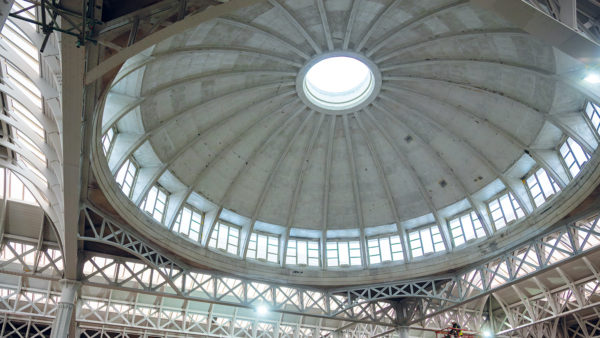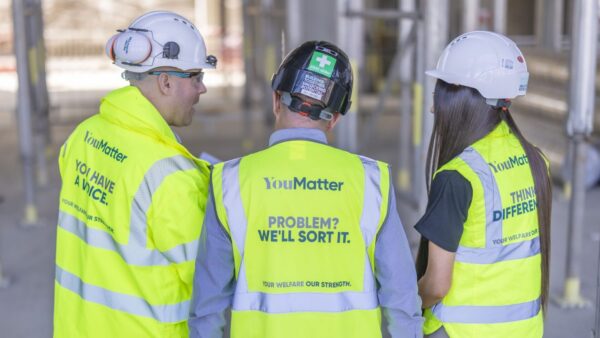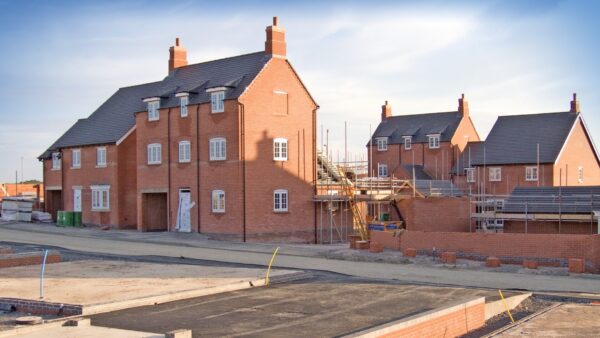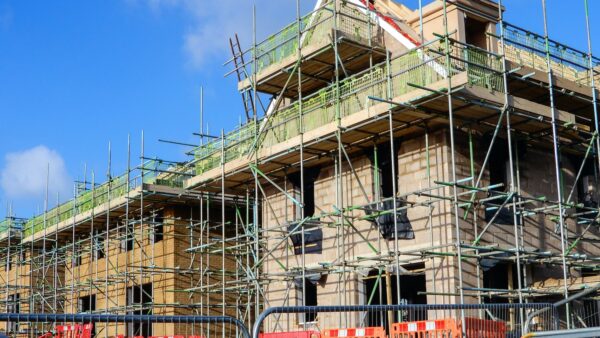In Water Saving Week, CIOB’s head of sustainability Amanda Williams looks at how new developments can prioritise water efficiency.

Many people perceive the UK to be a fairly wet place, but in reality, we receive less rainfall than many of us think, while on average we use more water per person per day than those in most other European countries. The issue of water scarcity is not on many people’s radar, but it should be.
By 2050, it’s predicted that water demand will outstrip supply by 5 billion litres a day unless action is taken. If that becomes a reality, we will face serious restrictions on how and when we use water. The impact on the economy would be widespread and damaging across almost all sectors.
A range of measures to tackle the issue is needed, including reducing leaks from the pipes owned by water companies and those owned by their customers, increasing storage for water by building new reservoirs, looking at how water is shared out across the country, innovative schemes to recycle wate water and reducing water demand –essentially everyone using less. Defra has set a National Water Target for the amount of water put into public supply to be reduced by 20% by 2038.
Reducing demand hinges heavily on people changing their behaviours by having shorter showers, putting the washing machine on less and turning off the tap while brushing teeth, to give just a few examples.
However, this alone won’t bring about the level of change needed to avoid water shortages in the not-too-distant future. This is where the construction industry has a role to play by building homes, commercial buildings and public spaces that are water efficient, in the same way it has shifted to creating buildings that are energy efficient.
Developer incentives
As of 1 April 2025, all English water companies are required by Ofwat to offer incentives to developers to build homes that are water efficient.
Previously, not all water companies offered incentives and those that did had different types of incentives, meaning there was a lack of consistency which was confusing and unhelpful for developers operating in more than one part of the country.
The incentives offered to developers relate to discounts on connection fees. For example, developers that install water-efficient fittings in the homes they build, such as taps, showers and toilets, pay lower connection fees, in some cases around half as much as those installing older style water inefficient fittings.
These incentives broadly align with the ‘fittings approach’ used within Part G of the building regulations. This incentive mechanism is a clear move away from the flawed ‘litres per person per day’ approach, also included within Part G.
The water efficiency of the fitting is currently measured on flow rate or volume, however when the government’s mandatory water efficiency labelling scheme, similar to the existing energy rating scheme, comes into force later this year, it will become easier for developers to know which fittings are most water efficient and therefore which ones to install to qualify for the water companies’ incentive offers.
While all water companies now must offer incentives to developers relating to fittings, some, such as Thames Water, offer additional advanced incentives which encourage even greater levels of water efficiency, such as greywater reuse, rainwater harvesting and full water neutrality.
Increasing momentum
Thames Water was the first company to start offering developer incentives three years ago, and I recently spoke to its water demand reduction manager, Andrew Tucker, who told me he is seeing mainly tier one developers taking up the incentives, but momentum is increasing thanks to better engagement between water companies and developers.
Tucker said: “It’s actually pretty easy for developers to take advantage of the incentive schemes, as water-efficient fittings are readily available and don’t cost any more to buy and install in new homes than older style ones. It’s already in part G of the building regulations as an ‘optional requirement’ and the process of applying for the schemes water companies offer is straightforward, as developers will be in touch with them about the new connections anyway.
“In terms of going beyond water-efficient fittings and including greywater reuse and rainwater harvesting in new builds, this really needs to be an aspiration too. However, there are a handful of key barriers that we hear about from developers.
“First, the cost. Clearly, adding in systems that, for example, collect rainwater or recycle water from the shower to flush the toilet, add to the cost of a new build, so it’s understandable developers are unlikely to do so unless they’re working on a development that is striving for particularly high levels of overall sustainability.
“The second point, which links closely to this, is customer demand, or a lack of. Home buyers have long been wise to the benefits of buying a home that is energy efficient, as energy saving is far more widely talked about than water saving, so buyers demand developers have this high on their agendas. They are mostly less clued up on the issue of water scarcity and the financial benefits of using less water, however, and therefore are not placing expectations on developers to build water-efficient homes. And, even if they were, there is a lack of expertise when it comes to installation and maintenance, so it’s a chicken-and-egg situation.
“Developers won’t upskill their people on the technology if people aren’t asking for it, but the technology can’t be offered to buyers if there aren’t people qualified to install it. The matter of ongoing costs and maintenance of water reuse technology is also a problem, and something that homebuyers would need clarity on if they were to buy a property that used such technology.”
“Our environmental incentives aim to drive better water fittings, displacing potable water use with alternative sources, and offsetting the remaining demand by saving water in existing homes and businesses. These steps could potentially be viewed as a precursor for future building regulations or planning requirements.”
Changes ahead
A government consultation on changes to building regulations is expected later this year. Tucker was keen to point out that this will be an opportunity for water efficiency to be given greater focus and shaped by organisations with responsibility for reducing water demand and also those responsible for building the homes and commercial properties in which such a precious resource is used.
For us at CIOB, the issue of water scarcity is not one we want to shy away from. Water is key to life and it’s in everyone’s interests to ensure there’s enough to sustain our own lives, as well as the natural environment.
Information about water company developer incentives can be found on their websites or by speaking to their developer services teams.
Amanda Williams CEnv is head of environmental sustainability at CIOB.











